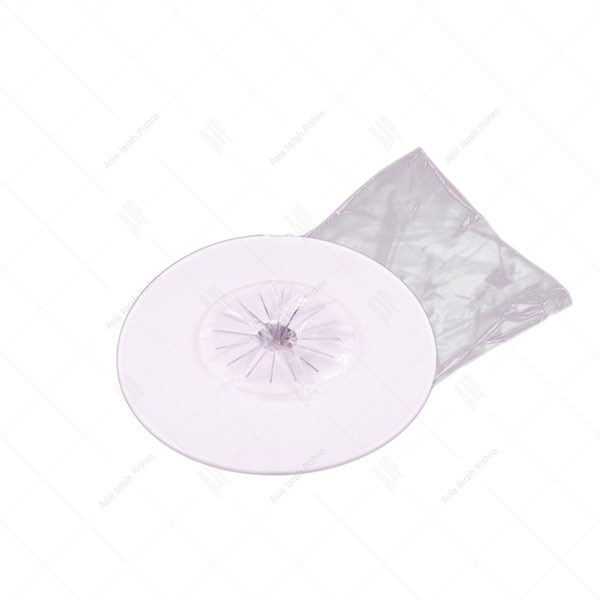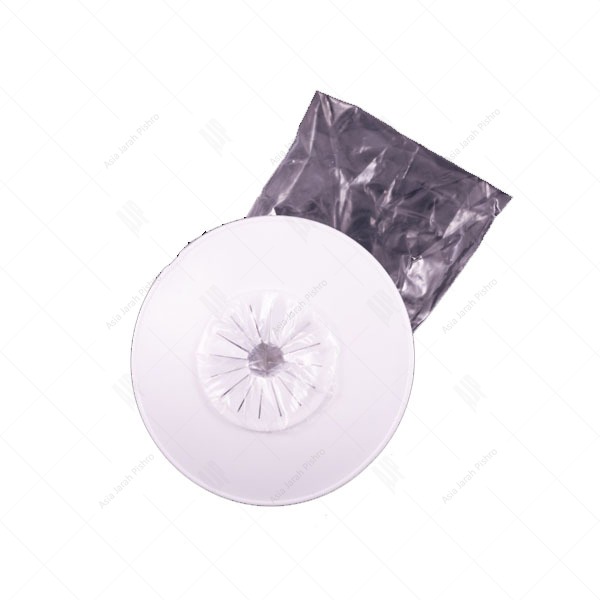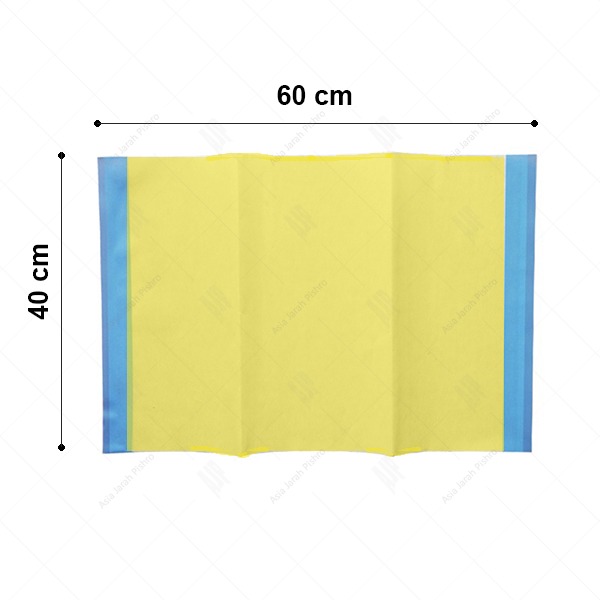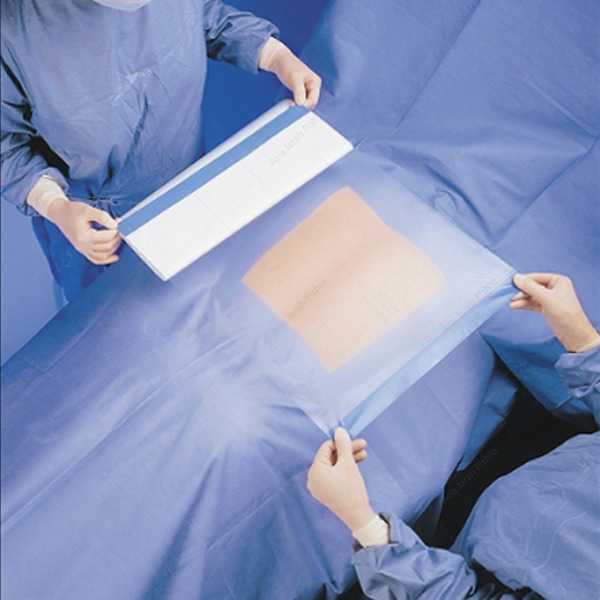Surgical Incise Drape 40*45 cm
A surgical incision drape is a medical device used in surgical procedures to cover the open part of the surgical site. These products are produced in different sizes. One of the sizes used to cover these areas is incise drape 40*45 cm, which we will introduce below.

What is Surgical Incision Drape?
In surgery, after preparing the surgical site and covering the patient with surgical drapes, a part of the surgical site that is disinfected and located between the drapes remains open for a surgical incision. Although this part is pre-disinfected, it is not completely free of germs.
Therefore, it is better to cover this part in such a way that, in addition to the possibility of cutting and sufficient visibility, it has the appropriate coverage of the skin to prevent the transfer of bacteria from the surface of the skin to the surgical site.
So, sterile surgical incision drape is used as a barrier to cover the open part of the surgical site (between the cloth drapes). This product made of transparent film of polyurethane or other transparent polymers that sticks to the skin and prevents the transfer of bacteria and contamination from the skin to the surgical incision site.
These drapes must have high cohesion, flexibility and proper strength. These should also be compatible with the skin and cover the skin of the operation area completely up to the drapes. On the other hand, the use of betadine helps control more pollution.
Uses of surgical incision drape
The main use of a incise drape is to prevent the transfer of microorganisms from the surrounding skin to the surgical site and to maintain an ideal and sterile environment even in long-term surgery.
Application of incise drape
- General surgery such as Appendix and gallbladder removal
- Gynecological surgery such as cesarean section, hysterectomy, and etc
- Orthopedic surgery such as fracture repair, joint replacement, and etc
- Open heart surgery and vascular surgery
- Neurosurgery
- Eye surgeries
- Plastic surgery
- Chest surgery
- Spine surgery, laparoscopy, laser, and etc
How to use surgical incision drapes?
- First, the drape (covering the patient’s operation site with sterile cloths) is completely done, the drapes are fixed, and then the specified surgical incision site of the operation area skin remains open.
- The incise drape pack, which is sterile, is opened on the surgical table and given to the surgical team.
- From the surgical team, one person takes the free edges of the sterile drape (usually colored and without glue), that has been installed for this purpose.
- Then, the second person takes the paper (under it) and brings film closer to the incision site.
- The colored edges are placed on the drapes and near the surgical site. Then the second person slowly separates the paper so that the sticky part sticks first on the drape edge and then on the skin.
- Separating the paper and gluing the cover continues until the end, until the adhesive part covers the entire surface of the skin.
- At the end, the hand is stretched over the film and the skin, so that it can be corrected if there is air in it or it is not attached.

Surgical incision drape removal
At the end of the surgery, before dressing the incision site, the surgeon separate the edges of the drape from the incision site towards the drapes and pushed aside so that the area is available for disinfection and dressing.
After the final dressing, the the incision film and all of drapes will be removed from the patient.
Key features of AJP surgical incision drape
- Disposable
- Thin and transparent
- Impermeable to moisture and liquids
- High flexibility
- High elasticity
- In various sizes
- Packaging in medical envelopes
- Sterilized by ethylene oxide
AJP Incise drape sizes in centimeters
- Surgical Incision Drape (30 * 40)
- Surgical Incision Drape (40 * 45)
- Surgical Incison Drape (40 * 60)
- Iodine Surgical Incision Drape (40 * 45)
- Iodine Surgical Incision Drape (40 * 60)
Benefits of using incise drape 40*45
- Creating a sterile environment around the operation site
- Ideal adhesion to the skin of the surgical site
- High resistant and formability
- Thin with high tensile strength and elasticity
- Transparent and non-shiny surface to avoid light reflection in the surgeon’s eyes
- Compatible with the skin
- Hypoallergenic, will not cause any unexpected action to the skin after it’s applied
Warnings
- Accuracy is very important in this work.
- Hygienic tips and a sterile process should be done correctly.
- The work process should be done by the scrub nurse and the surgeon’s assistant in the operating rooms.
- Keep dry
- Use only once
- Don’t use it when the package has been opened or damaged





















Reviews
There are no reviews yet.